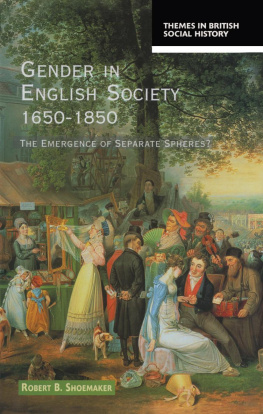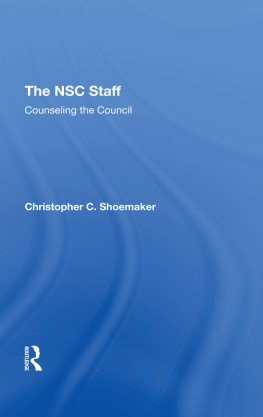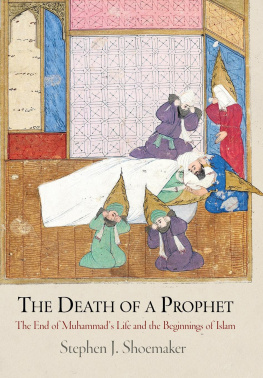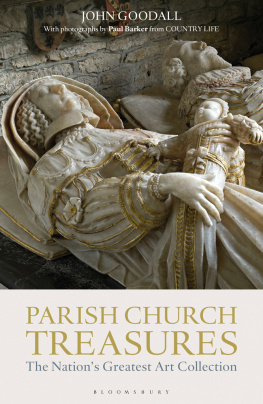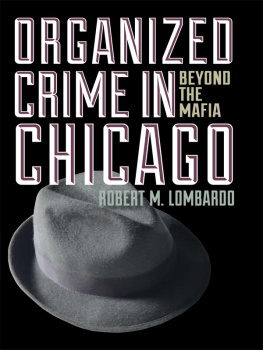Gender in English Society, 16501850
THEMES IN BRITISH SOCIAL HISTORY
edited by John Stevenson
This series covers the most important aspects of British social history from the Renaissance to the present day. Topics include education, poverty, health, religion, leisure, crime and popular protest, some of which are treated in more than one volume. The books are written for undergraduates, postgraduates and the general reader, and each volume combines a general approach to the subject with the primary research of the author.
Currently available
THE ENGLISH FAMILY 14501700 Ralph A. Houlbrooke
POVERTY AND POLICY IN TUDOR AND STUART ENGLAND Paul Slack
CRIME IN EARLY MODERN ENGLAND 15501750 J. A. Sharpe
GENDER IN ENGLISH SOCIETY, 16501850: The Emergence of Separate Spheres? Robert Shoemaker
CRIME AND SOCIETY IN ENGLAND 17501900 (Second Edition) Clive Emsley
THE LABOURING CLASSES IN EARLY INDUSTRIAL ENGLAND 17501850 John Rule
POPULAR DISTURBANCES IN ENGLAND 17001832 (Second Edition) John Stevenson
SEX, POLITICS AND SOCIETY: The Regulation of Sexuality since 1800 (Second Edition) Jeffrey Weeks
THE WORKING CLASS IN BRITAIN 18501939 John Benson
THE RISE OF THE CONSUMER SOCIETY IN BRITAIN 18801980 John Benson
HEALTH AND SOCIETY IN TWENTIETH-CENTURY BRITAIN Helen Jones
LAND AND SOCIETY IN ENGLAND 17501980 G. E. Mingay
Gender in English Society, 16501850
The emergence of separate spheres?
ROBERT B. SHOEMAKER
First published 1998 by Addison Wesley Longman Limited
Published 2013 by Routledge
2 Park Square, Milton Park, Abingdon, Oxon 0X 14 4RN
711 Third Avenue, New York, NY 10017, USA
Routledge is an imprint of the Taylor & Francis Group, an informa business
Copyright 1998, Taylor & Francis.
The right of Robert B Shoemaker to be identified as author of this Work has been asserted by him in accordance with the Copyright, Designs and Patents Act 1988.
All rights reserved. No part of this book may be reprinted or reproduced or utilised in any form or by any electronic, mechanical, or other means, now known or hereafter invented, including photocopying and recording, or in any information storage or retrieval system, without permission in writing from the publishers.
Notices
Knowledge and best practice in this field are constantly changing. As new research and experience broaden our understanding, changes in research methods, professional practices, or medical treatment may become necessary.
Practitioners and researchers must always rely on their own experience and knowledge in evaluating and using any information, methods, compounds, or experiments described herein. In using such information or methods they should be mindful of their own safety and the safety of others, including parties for whom they have a professional responsibility.
To the fullest extent of the law, neither the Publisher nor the authors, contributors, or editors, assume any liability for any injury and/or damage to persons or property as a matter of products liability, negligence or otherwise, or from any use or operation of any methods, products, instructions, or ideas contained in the material herein.
ISBN 13: 978-0-582-10316-0 (hbk)
ISBN 13: 978-0-582-10315-3 (pbk)
British Library Cataloguing in Publication Data
A catalogue record for this book is
available from the British Library
Library of Congress Cataloging-in-Publication Data
Shoemaker, Robert Brink.
Gender in English society, 1650-1850: the emergence of separate spheres / Robert B. Shoemaker.
p. cm. - (Themes in British social history)
Includes bibliographical references and index.
ISBN 0-582-10315-0 (ppr). - ISBN 0-582-10316-9 (csd)
1. Sex role-Eng!and-History-17th century. 2. Sex role-England-History-18th century. 3. Sex role-England-History-19th century. 4. England-Social conditions-17th century. 5. England-Social conditions-18th century. 6. England-Social conditions-19th century. I. Title. II Series.
HQ1075.5.G7S56 1998
305.30942-dc21
97-38879
CIP
Set by 7 in 10/12 Baskerville
Cover: Detail of St. Jamess Fair, Bristol by Samuel Colman (1804-1840). Reproduced courtesy of City of Bristol Museum and Art Gallery/Bridgeman Art Library, London.
Contents
For Wendy and Roland
Gender is a relatively new subject in English history, but given the number of books and articles which have now been published it is arguably time to take stock and assess what the big picture might look like. To attempt such a broad overview one must depend very much on the research of others, and I would here like to thank all those historians whose published work made this book possible to write. The writings of Leonore Davidoff, Catherine Hall, and Amanda Vickery posed the central problem addressed in these pages. The works of Maxine Berg, Anna Clark, Patricia Crawford, Peter Earle, Amy Erickson, Anthony Fletcher, Edward Higgs, Bridget Hill, Margaret Hunt, Thomas Laqueur, Phyllis Mack, Clare Midgley, Jane Rendall, Randolph Trumbach, and Deborah Valenze were also especially valuable. A number of other scholars generously allowed me to consult, and in some cases cite, their work in progress: John Beattie, Lisa Cody, Tim Hitchcock, Tim Meldrum, John Tosh, and Martin Wiener.
Much of the book was written during a very pleasant stint as a Visiting Scholar at the Institute for Research on Women and Gender at Stanford University. I am grateful to the staff and fellows of the Institute for their hospitality and for the opportunity to present an early draft of to the scholars seminar. The Institute was an exceptionally stimulating place in which to work and I would especially like to thank Susan Bell, Edith Gelles, Karen Offen, and Stephanie McCurry for many lively discussions.
Portions of the work in progress were read by Lisa Cody, Ludmilla Jordonova, and Mary Vincent and I am grateful for their helpful comments. In numerous conversations, Faramerz Dabhoiwala made many useful suggestions. Wendy Bracewell, Anthony Fletcher, Tim Hitchcock, Margaret Hunt, John Stevenson, and John Tosh read drafts of the entire manuscript and gave valuable advice and encouragement. Special thanks go to Tim Hitchcock, who has been a constant source of ideas and references over many years, and Margaret Hunt, whose careful reading and insightful criticisms saved me from numerous errors and forced me to clarify my thoughts. No doubt none of these gender historians will agree with everything that follows, but this book has benefited enormously from their unstinting generosity.
On a personal note, I would like to thank Clara Shoemaker and the late David Shoemaker for showing me, from an early age, that there is more than one way to be a good mother and father. This book is dedicated to Wendy and Roland, without whom it would have been written much faster, but it would have been much less rewarding to write.
R.B.S.
Sheffield, April 1997
Gender as a category of historical analysis first appeared in the writings of American feminists in the 1970s. By the 1980s the term was being used by historians of England, and by the mid-1990s books and articles with the word gender in the title were appearing virtually every month. But what does the term mean? For some, it has become little more than a synonym for women, as a form of political correctness (as in the expression women and gender). For others, it is a synonym for sex: even in scientific literature, gender is now used in discussions of the behaviour of plants and insects. But the terms most powerful use is as an

